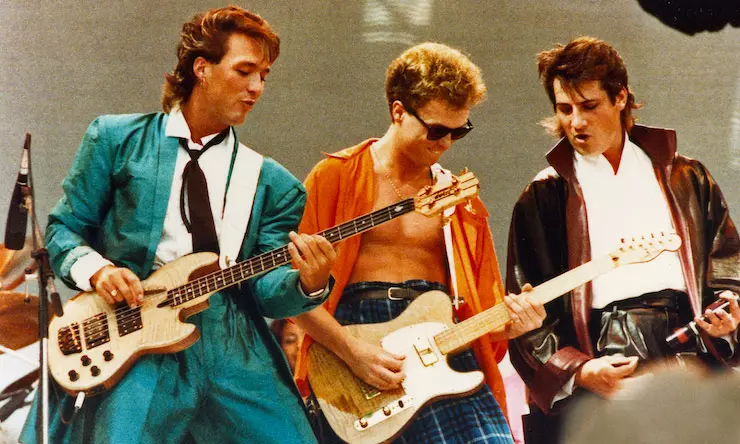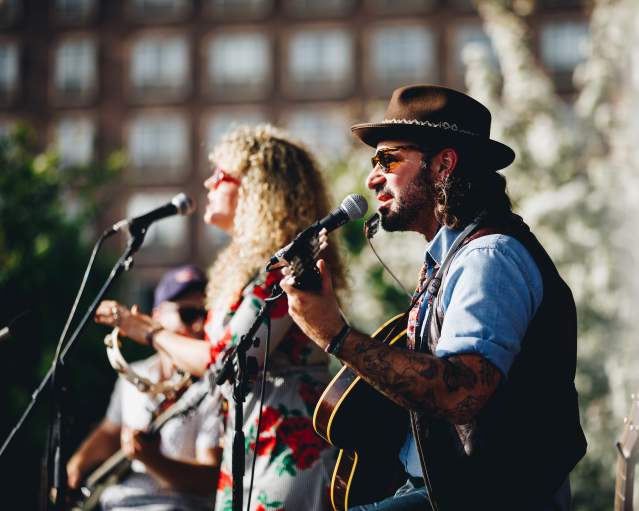Have you wondered, “What year was the Live Aid concert?” This iconic event in music history holds a special place in the hearts of many music enthusiasts. If you are curious about the historical significance of Live Aid and the year it took place, you have come to the right place. Live Aid, the groundbreaking dual-venue benefit concert organized by Bob Geldof and Midge Ure, took place on July 13, 1985. This event brought together some of the biggest names in the music industry to raise funds for Ethiopian famine relief. Join us on this insider’s guide to explore the magic of Live Aid and its impact on the world of music.
‘Imagine’ is 50 today. Imagine if John Lennon had lived…and had played at LIVE AID. Do you think he would have? @yokoonohttps://t.co/pXc6Qdlzxi
— Live Aid (@live_aid1985) September 9, 2021
Introduction to Live Aid Concert
The Live Aid Concert was a historic music event on July 13, 1985, organized by Bob Geldof and Midge Ure. The concert aimed to raise funds to relieve the ongoing Ethiopian famine. It was held simultaneously at Wembley Stadium in London, England, and John F. Kennedy Stadium in Philadelphia, USA.
Significance of Live Aid Concert
The Live Aid Concert is regarded as one of the largest and most iconic benefit concerts in history, with an estimated global audience of 1.9 billion across 150 countries. It featured performances by legendary artists such as Queen, U2, David Bowie, and many more, making it a memorable and impactful event.
The emotional and powerful performances resonated with viewers and helped raise over $125 million in famine relief aid.
Legacy of Live Aid Concert
The Live Aid Concert raised significant funds for charity and sparked global awareness of humanitarian issues and the power of music to bring about social change. The success and impact of Live Aid inspired similar benefit concerts and fundraising efforts, creating a lasting impact on the music industry and society as a whole.
- Live Aid set a benchmark for future charity events to follow.
- The event showcased the ability of music to unite people for a common cause.
- It highlighted the role of celebrities in using their influence for philanthropic purposes.

Background and Origins of Live Aid
The Live Aid concert, a monumental event in music history, took place on July 13, 1985. Bob Geldof and Midge Ure organized Live Aid as a dual-venue benefit concert held simultaneously in London’s Wembley Stadium and Philadelphia’s John F. Kennedy Stadium. The event’s primary goal was to raise funds for Ethiopian famine relief, drawing attention to the widespread hunger crisis in Africa.
Initiation and Inspiration
The idea for Live Aid stemmed from the success of the charity single “Do They Know It’s Christmas?” by Band Aid, a supergroup featuring various British and Irish musicians. The overwhelming response to the single inspired Geldof to organize a large-scale fundraising concert, leading to the birth of Live Aid.
The concept of holding a global music event to address a humanitarian cause on such a massive scale was groundbreaking for its time. Both the music industry and the general public showed immense support for the initiative.
Global Impact and Legacy
Live Aid featured iconic performances by legendary artists like Queen, David Bowie, U2, and Madonna, captivating an estimated global audience of 1.9 billion across 150 nations. The event raised substantial funds for famine relief and significantly raised awareness about the ongoing crisis in Ethiopia.
The success of Live Aid inspired a wave of subsequent benefit concerts and charitable initiatives, setting a new standard for using music as a powerful tool for raising awareness and funds for important humanitarian causes.
The Lineup and Performances
One of the most memorable aspects of the Live AidLineuprt held on July 13, 1985, was the stellar lineup of musicians who graced the stage. The event featured some of the lineup names in the music industry, including Queen, U2, Led Zeppelin, David Bowie, and Madonna, to name a few. Each artist delivered powerful performances that captivated the global audience and left a lasting impact.
The Mega Stars
Queen’s performance, particularly Freddie Mercury’s electrifying set, is often hailed as one of rock history’s most incredible live performances. The band’s rendition of “Bohemian Rhapsody” and “We Are the Champions” left the audience in awe with their energy and showmanship.
Unforgettable Collaborations
During the concert, Bono from U2 jumped off the stage to embrace a fan, creating a heartwarming moment that symbolized the unity and spirit of Live Aid. Additionally, Mick Jagger and Tina Turner’s collaboration on “It’s Only Rock ‘n Roll” showcased the magic of musical partnerships.
- Queen’s iconic Live Aid performance (source: Rolling Stone)
- U2’s memorable moment with a fan on stage (source: Billboard)
Impact and Legacy of Live Aid
The Live Aid concerts held on July 13, 1985, forever changed the landscape of charity events and musical gatherings. With a lineup that included iconic names like Queen, U2, and Led Zeppelin, the lineup generated an unprecedented amount of money for famine relief in Africa and created a ripple effect in how concerts are organized for social causes.
Global Awareness and Fundraising
Live Aid united millions of viewers worldwide, transcending borders and uniting people for a common cause. The event raised over $125 million in relief funds, showcasing the power of music and collective action in addressing global issues.
The concerts also highlighted the potential for harnessing celebrities’ influence for positive impact, paving the way for future charity initiatives and benefit concerts.
Cultural and Musical Influence
The performances at Live Aid left an indelible mark on the music industry, with artists delivering electrifying sets that are still celebrated decades later. Queen’s legendary performance, including Freddie Mercury’s iconic showmanship, remains a defining moment in rock history.
The event also sparked collaborations among musicians and bands, inspiring a wave of charity singles and projects to address social injustices and humanitarian crises.

Significance of the Year Live Aid Took Place
Live Aid, the iconic benefit concert, took place on July 13, 1985. The year 1985 marked a significant moment in music history as musicians and fans united for a global cause. Bob Geldof and Midge Ure organized this event to raise funds for Ethiopian famine relief. The year 1985 was a time of heightened awareness and activism, with Live Aid serving as a platform for artists to use their influence for a noble cause.
Impact of Live Aid on Global Aid Efforts
1985 saw a surge in humanitarian efforts following the success of Live Aid. The concert not only raised millions of dollars for famine relief in Ethiopia but also inspired other charitable events around the world. It served as a catalyst for increased awareness and action regarding global issues.
The power of music to bring people together for a cause was exemplified in 1985, leaving a lasting impact on how celebrities and artists engage in philanthropy.
Legacy of Live Aid in Music History
1985 stands out in music history for Live Aid’s star-studded lineup, featuring iconic performances by Queen, U2, David Bowie, and more. Legendary moments from the concert continue to be celebrated and remembered by music enthusiasts worldwide.
1985 witnessed a historic gathering of talented musicians and bands, all coming together to leverage their artistry for a more significant cause, leaving a lasting impact on the music industry.

Frequently Asked Questions
- When was the Live Aid Concert held?
- The Live Aid Concert was held on July 13, 1985.
- Where did the Live Aid Concert take place?
- The Live Aid Concert occurred at Wembley Stadium in London, England, and John F. Kennedy Stadium in Philadelphia, USA.
- Why was the Live Aid Concert organized?
- The Live Aid Concert was organized to raise funds for famine relief in Ethiopia.
- Who were the organizers of the Live Aid Concert?
- Bob Geldof and Midge Ure organized the Live Aid Concert.
- How many artists performed at the Live Aid Concert?
- Over 70 artists performed at the Live Aid Concert across the two venues.
- How much money was raised by the Live Aid Concert?
- The Live Aid Concert raised over £125 million for famine relief in Ethiopia.
Unlocking the Timeless Legacy of the Live Aid Concert
In conclusion, the Live Aid concert, which took place in 1985, remains a pivotal moment in music history. This iconic event united legendary artists in a remarkable cause to combat global poverty. The year 1985 marked a turning point in philanthropy and showcased the power of music to drive positive change. Decades later, Live Aid’s impact inspires new generations to take action and make a difference in the world. Remembering the year of the Live Aid concert highlights its historical significance and encourages us to reflect on the enduring importance of collective compassion and solidarity.
